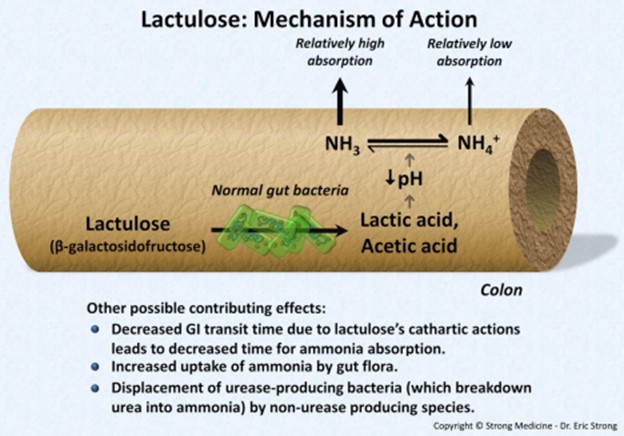A nurse is caring for a client who has cirrhosis and a prescription for lactulose. Following administration, the nurse should monitor the client for which of the following adverse effects?
Peripheral edema
Diarrhea
Dry mouth
Headache
The Correct Answer is B
After administering lactulose to a client with cirrhosis, the nurse should monitor for the adverse effects of diarrhea. Lactulose is a laxative commonly used in the treatment of hepatic encephalopathy, which can occur in individuals with cirrhosis. One of the intended effects of lactulose is to promote bowel movements and reduce the absorption of ammonia in the gut, thus helping to manage hepatic encephalopathy.
While lactulose can cause adverse effects such as diarrhea, it is not typically associated with peripheral edema. Peripheral edema is often seen in cirrhosis due to fluid retention caused by liver dysfunction.
Dry mouth and headache are less commonly associated with lactulose use and are not typically the primary adverse effects to monitor for in this scenario.

Nursing Test Bank
Naxlex Comprehensive Predictor Exams
Related Questions
Correct Answer is ["2.5"]
Explanation
To determine how many milliliters (ml) should be administered per dose, we need to calculate the dose volume using the available concentration of famotidine.
Given:
Famotidine concentration: 40 mg/5 ml
Dose: 20 mg
We can set up a proportion to solve for the volume:
40 mg / 5 ml = 20 mg / x ml
Cross-multiplying the proportion, we get:
40 mg * x ml = 20 mg * 5 ml
Simplifying, we have:
40x = 100
Dividing both sides by 40, we find:
x = 100 / 40
x ≈ 2.5 ml
Therefore, the nurse should administer approximately 2.5 ml of famotidine per dose.
Correct Answer is C
Explanation
A.Docusate sodium should not be taken with mineral oil, as the combination can increase the risk of adverse effects and reduce the effectiveness of the medication.
B.Docusate sodium is primarily used to prevent constipation by softening stools, not for treating diarrhea.
C.Docusate sodium is a stool softener that typically works within 1 to 3 days to produce softer stools, making this statement a correct understanding of its effects and timeline.
D.While it’s important to stay hydrated when taking docusate sodium, the statement is somewhat misleading. It is typically recommended to take docusate sodium with a full glass of water to help facilitate the softening of stools.
Whether you are a student looking to ace your exams or a practicing nurse seeking to enhance your expertise , our nursing education contents will empower you with the confidence and competence to make a difference in the lives of patients and become a respected leader in the healthcare field.
Visit Naxlex, invest in your future and unlock endless possibilities with our unparalleled nursing education contents today
Report Wrong Answer on the Current Question
Do you disagree with the answer? If yes, what is your expected answer? Explain.
Kindly be descriptive with the issue you are facing.
